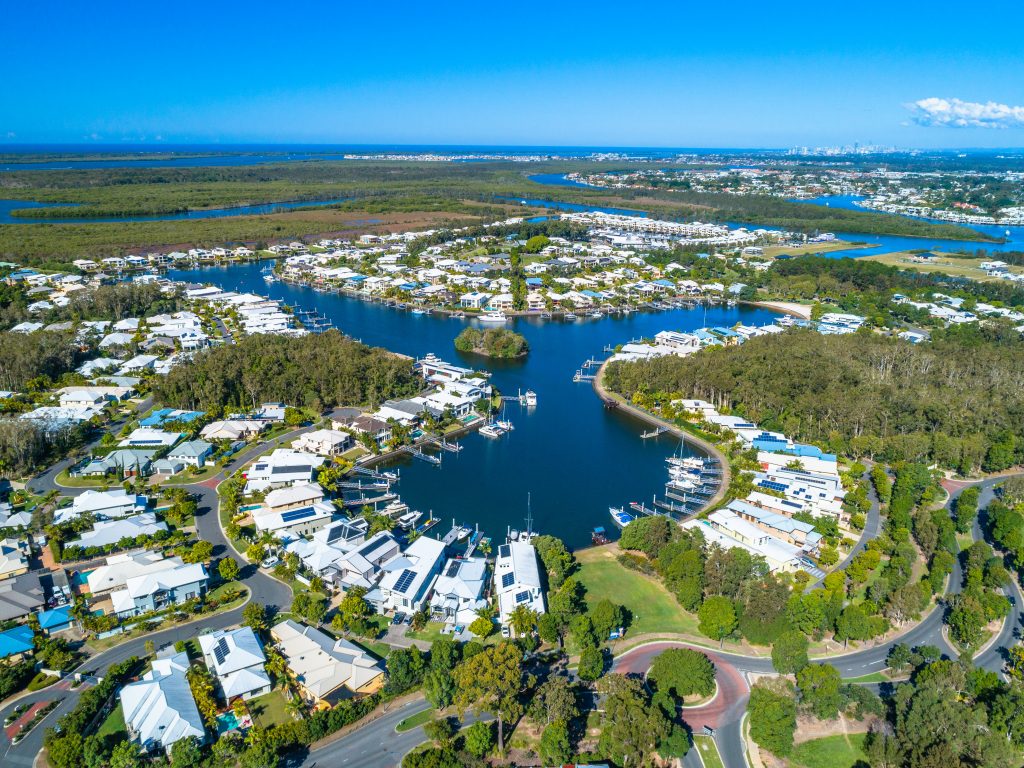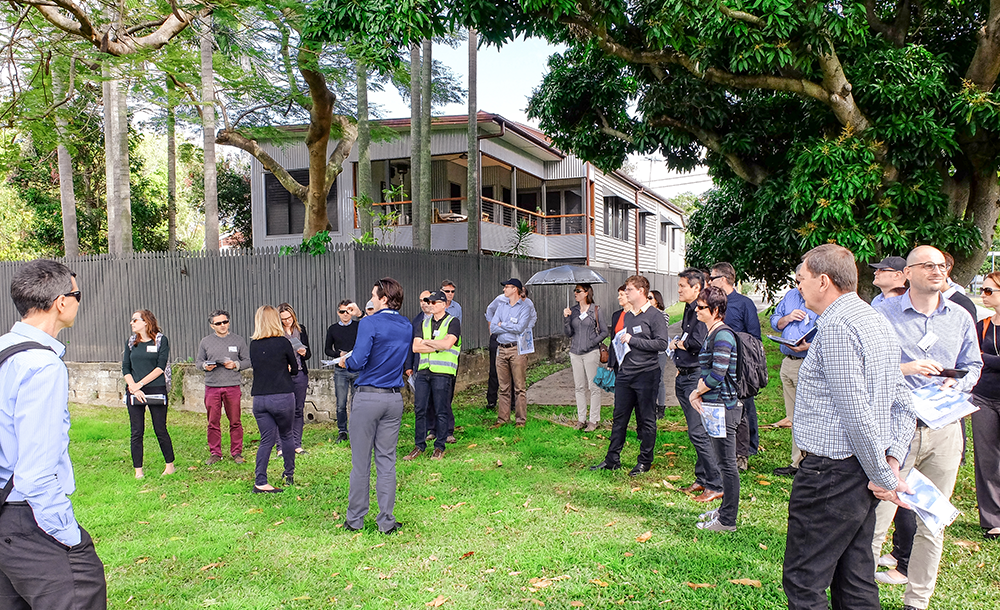Urban Futures: see it for yourself
In the previous edition of WaterSENSE, we discussed the International WaterCentre’s redeveloped master’s module, Urban Futures, with its facilitator David Robertson, Assistant Lecturer at the Monash Sustainable Development Institute. This diverse module ensures students are exposed to current industry research and practice. According to David, continuing feedback from students highlights that the module’s field trips are “an important opportunity to go out and see on-the-ground infrastructure and practice that aligns with the new paradigm of water sensitive cities.”
“The field trips proved invaluable for demonstrating the concepts we've learned in combination with the practical challenges that arise when applied to real life”, said Kyle Wang, one of the current students.
For example, at the beginning of August students visited Coomera Waters with Shaun Leinster from DesignFlow. Commencing in the late 1990s and surrounded by internationally protected “Ramsar” wetlands, the site was one of the first urban developments in Queensland to really embrace water sensitive urban design (WSUD). “Very early in the planning of the site stormwater specialists were working closely with urban and landscape designers to ensure the urban layout was informed by the stormwater requirements”, explained Shaun. “For a student, the site is interesting because you can see infrastructure that was only built 12 months ago next to some built 15 years ago, and the progression and maturity is really interesting. You can see where some things went right, and others didn’t quite work out.”

Shaun has been involved in the water industry since the early 1990s, and is currently joint director of a small design business that effectively functions as “the glue between the civil engineers, landscape architects, and planners for a variety of water infrastructure projects.” DesignFlow tends to follow the whole lifecycle of a project from early conceptualisation through to detailed design, supervision, asset handover, and ongoing management and maintenance. This lifecycle experiences provides insights that benefit future projects.
At Coomera Waters, a central theme of Shaun’s site tour was the lessons learned from this long-term involvement, and the design and construction approaches. Overall, substantial effort was put into using the full range of WSUD elements – rainwater tanks, swales, bio-retention systems, wetlands, a sustainable lake, and more – and they have been highly successful. But part of this long-term success required reflecting on what did and did not work. Valuable lessons from this development set up much of the policy and guideline work that has rolled out across Queensland and Australia.
“This critical reflection is important from the student perspective too”, continued Shaun. “Theories are important to test in the field, and the only way to do that is to get out there and kick the dirt. Being able to touch and feel WSUD systems that they have previously only seen in pictures can often inspire students. But it is also an opportunity for students trying to understand where they might fit into the real world. Discussing real WSUD outcomes, the design and construction process, and the potential enjoyment of being involved in protecting waterways can give students a better understanding of what they might ultimately be doing after graduating.”
Caroline Krisnadewi, a student with an architecture background, said “during the field trips, we had the chance to ask questions and be mentored by people who actually worked on or designed the systems. This opportunity was really good, since those people who work in the field are passionate and keen to share all they know.
I learned that a design for a space does not always need to be beautiful. The most important thing is how ecological function is considered in the process.”
For Shaun, who has supported the module with his expertise for five years, one of the great benefits of this annual site tour is that he can “tip a lot of what they’ve learned from their classroom training sessions on its head, and really challenge some of their perceptions out in the field. Sometimes industry moves a whole lot quicker than research, and so a course with this level of industry engagement and mentoring is exciting. Some of the most interesting opportunities for me and the students to challenge each other come when we’re standing out in the middle of a wetland or a bio-retention system.”
The students also visited two sites in Brisbane’s Norman Creek Catchment: one with architect Dr Paola Leardini from the CRCWSC's Project D5.1, and another with long-standing module contributor, Dr Peter Breen – an ecologist and waterway restoration specialist from E2Designlab. These complimentary trips explored different dimensions of the catchment. Paola, who is based at the University of Queensland and the Cooperative Research Centre for Water Sensitive Cities, challenged the students to ask: “what will come next in the urban form, and how will these changes create new opportunities?”

Reflecting on the field visit, David noted that “Water engineers tend to pay closest attention to the place where water concentrates, and don’t always think about opportunities for water sensitive interventions in the surrounding urban environment.” The students were pushed to think more broadly about the integration of new technologies – like biofilters and greenwalls – in building upgrades, infrastructure renewal, and new developments in the catchment. “Traditional urban design, without water sensitive thinking, means that the damage to water quality has been done before it even reaches the waterway itself”, continued David.
The next generation of water professionals will need highly developed critical thinking skills, and an understanding of the broader context in which WSUD theory meets reality. The many site visits within this course – including to the Norman Creek area and Coomera Waters – play a crucial role in providing this broader understanding, and challenge students to critically analyse how one can put water sensitive principles into practice in real-world situations.
Sam Green for the Mind Your Way team.